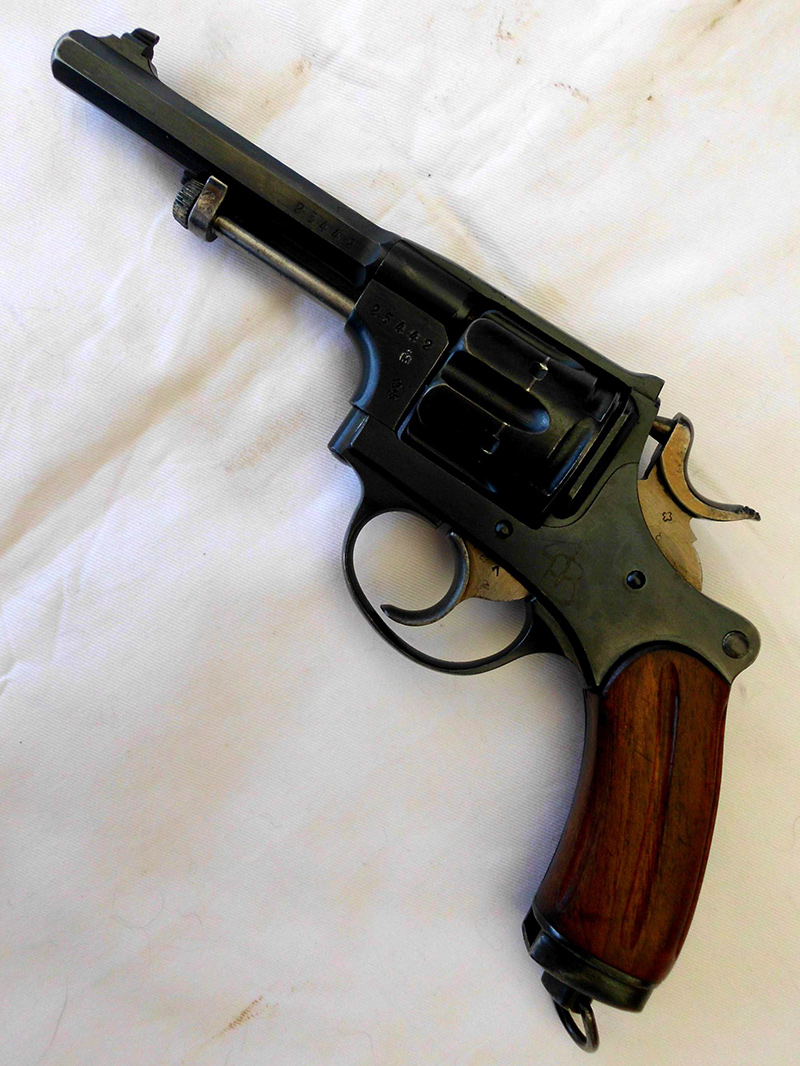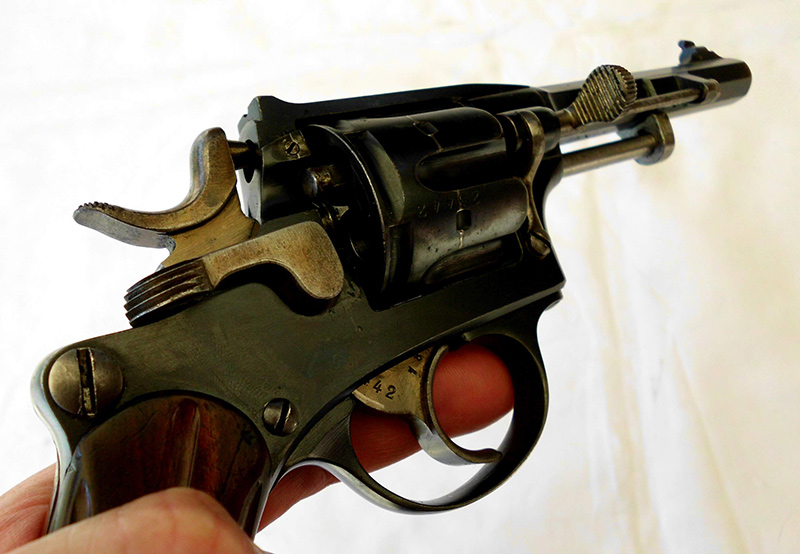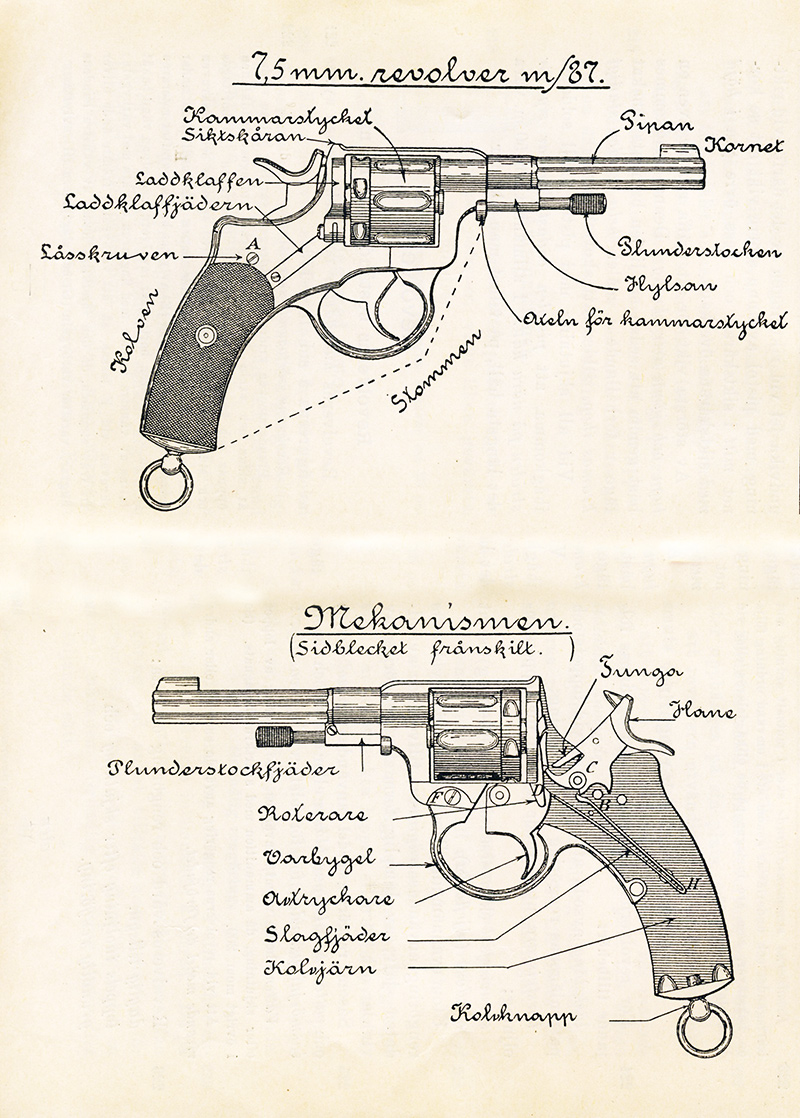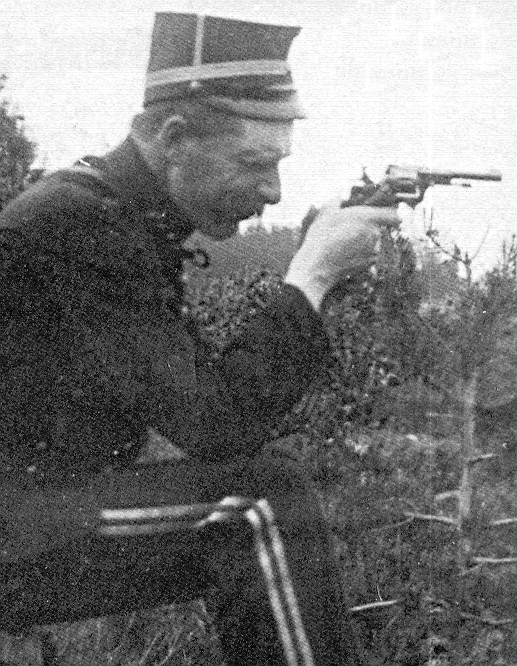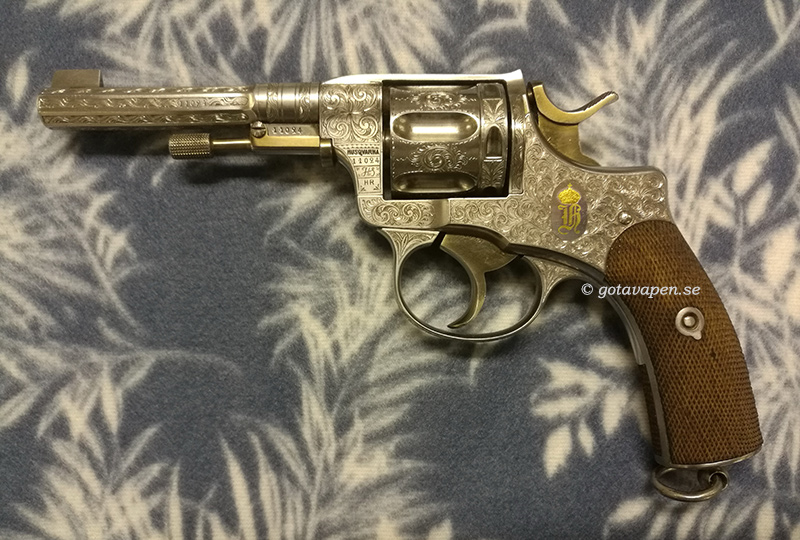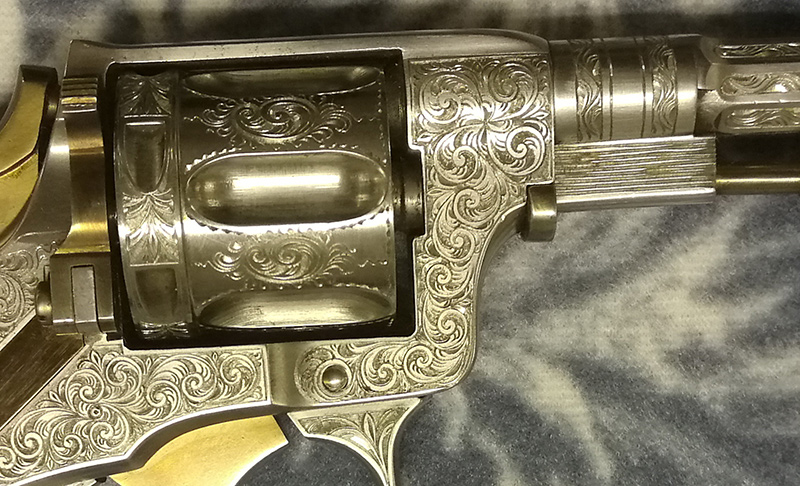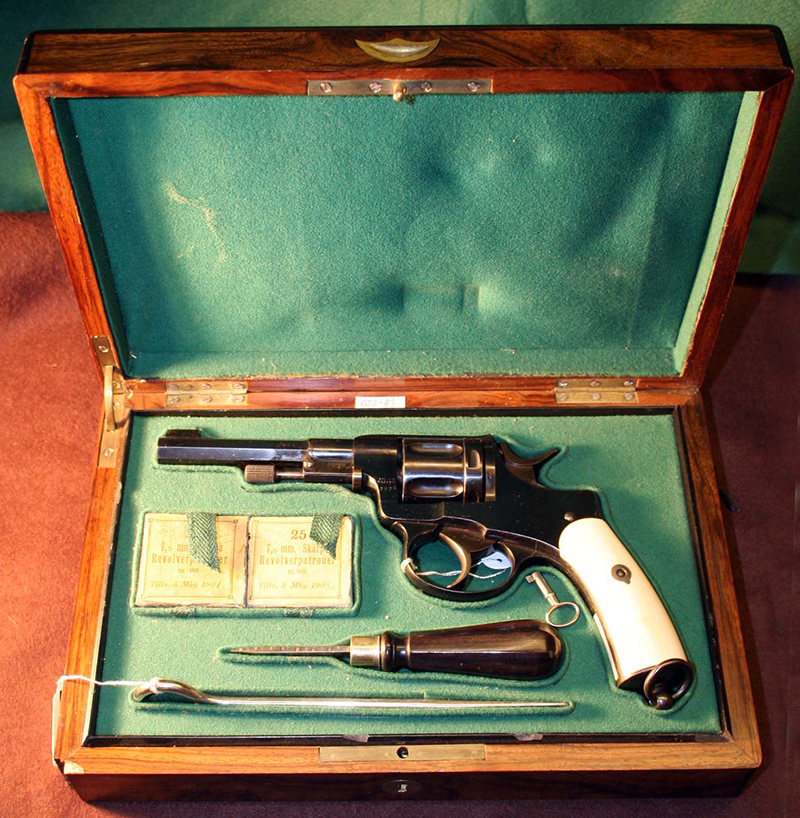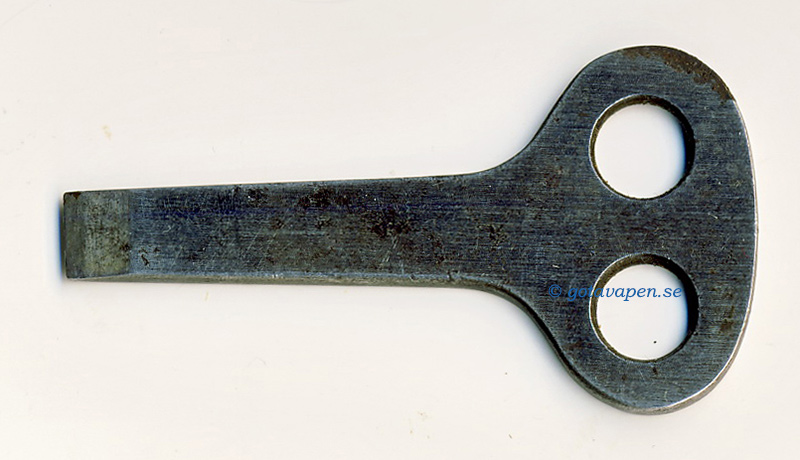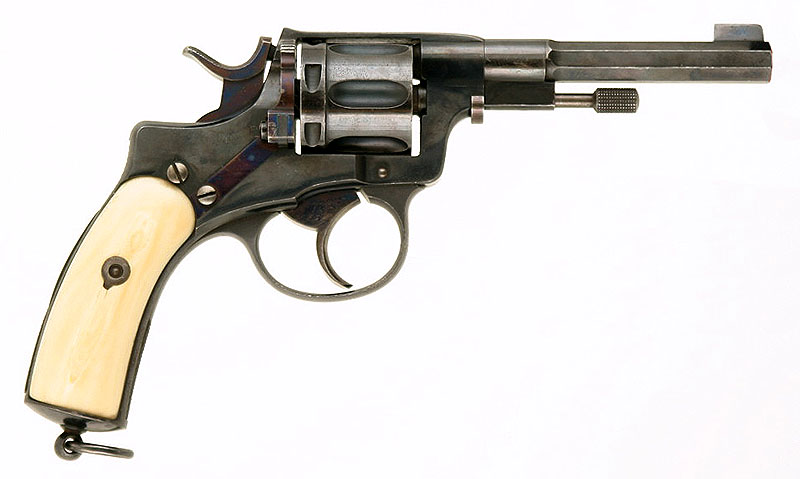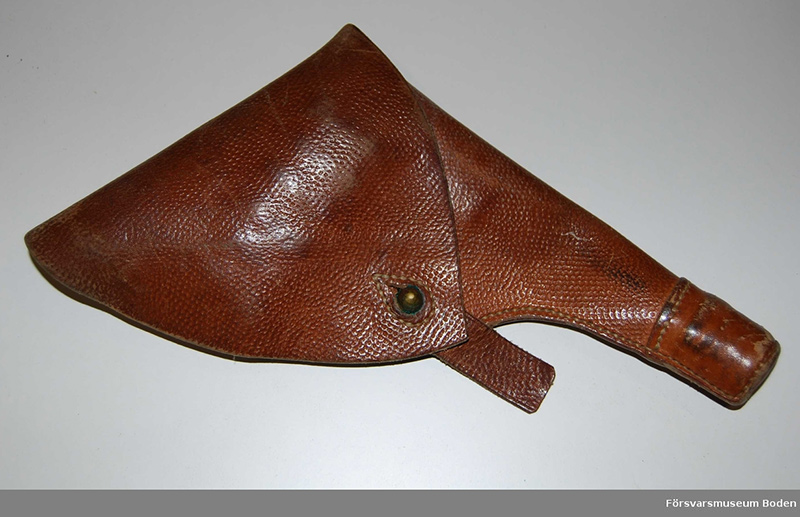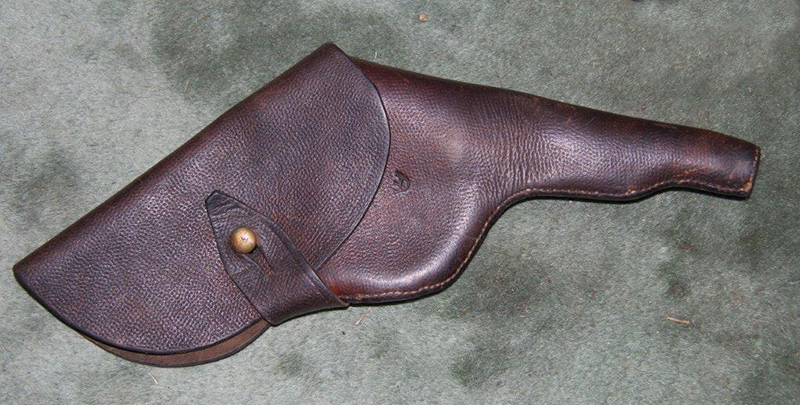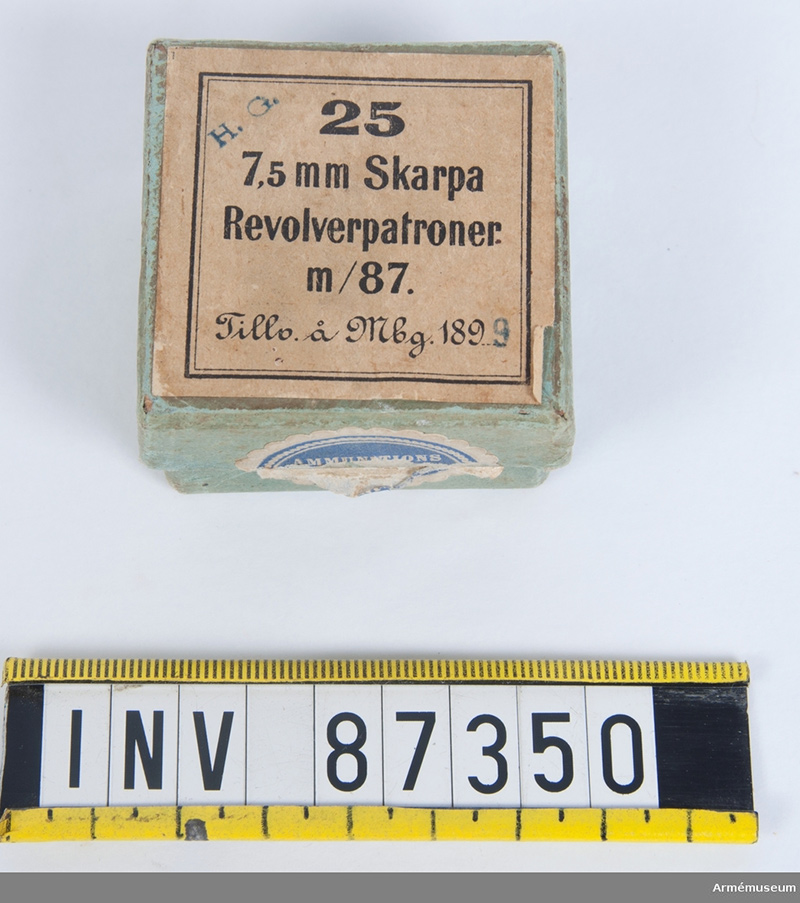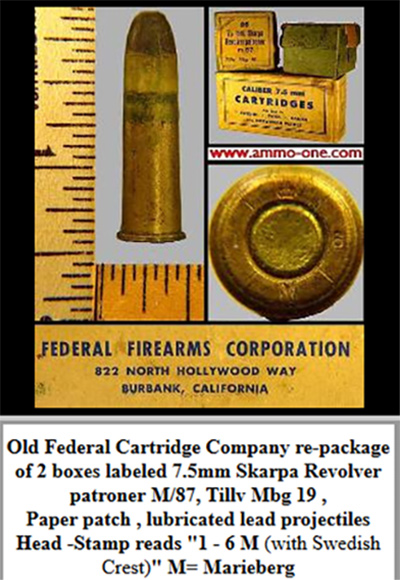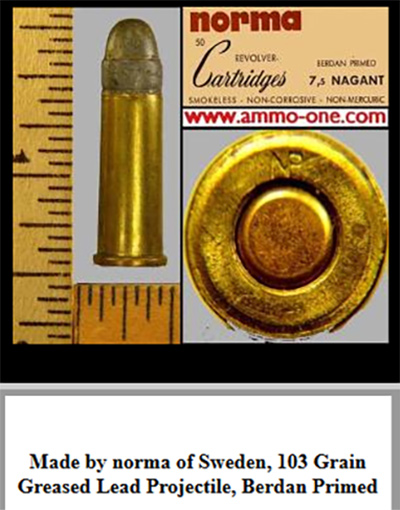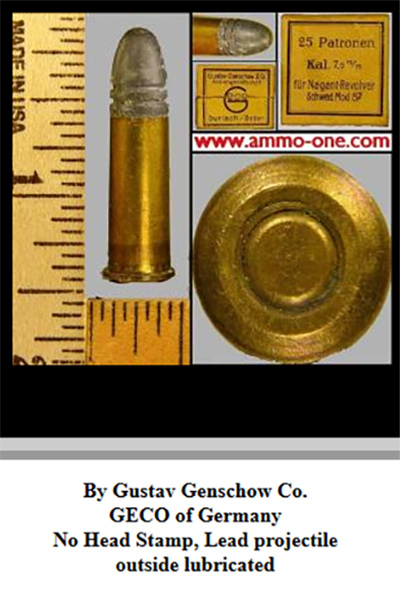The Swedish Nagant revolver
7.5 mm Revolver m/1887
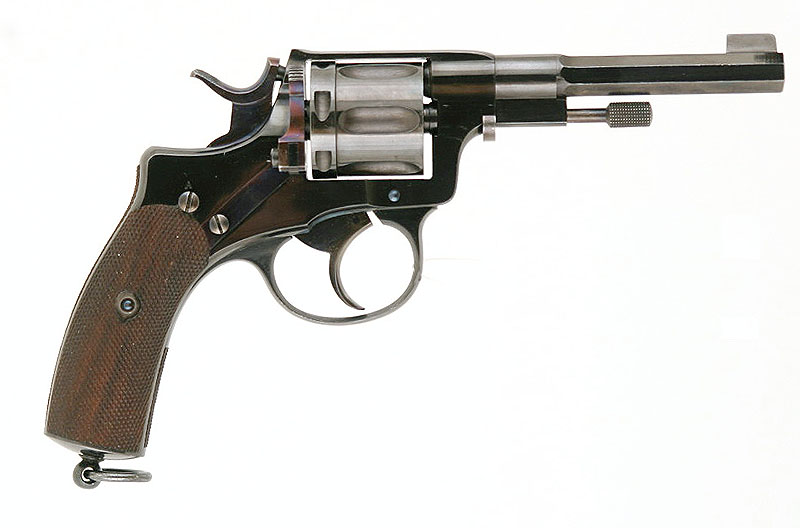
Improved gunpowder types that allowed higher velocities meant that towards the end of the 19th century, countries turned into smaller calibers. With undiminished or increased impact energy, advantages were gained in the form of better trajectory and greatly increased shooting range.
An arms commission 1884 was set to reduce for the first instance, the caliber reduction of rifles. The 12.17 mm Remington rifle m/1867 became 8x58mm, but the commission was also tasked with producing a new revolver with a modern caliber. The result was revolver m/1887 with the unusually small caliber 7.5 mm.
During the latter part of the 19th century, foreign armies equipped their officers with revolvers even in peacetime, something that the Swedish army also wanted to do. Swedish officers were obliged to pay for their personal weapon, the saber. The obligation would be extended to a revolver as well. The army had two turret types: m/63-79 and m/71, both large bore caliber weapons of fairly primitive construction. These were offered to the officers buying, but the interest in the old age weapons were poor. There was a need for a lighter and more modern revolver.
Weapons bought commercially and for the Navy lack Inspection officer marks. (see below)
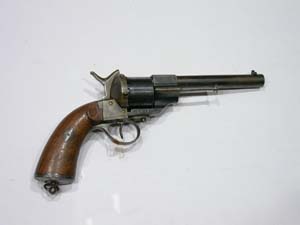
Revolver m/63-79. 1863 a French 11 mm Lefaucheux revolver with pin fire cartridges was accepted. 1879 it was modified to central ignition cartridges.
Weight 1.05 kg
velocity about 180 m/s
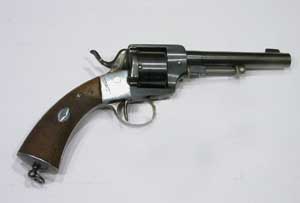
Revolver m/71. This revolver was produced by Francotte in Belgium. It used the same ammunition like m/63-79 but was even more heavy (1.17kg) and stronger with its closed frame.
Both revolvers were single action revolver. The hammer must be pulled with the thumb for each shot. The low velocity at muzzle gave a strongly curved trajectory.
